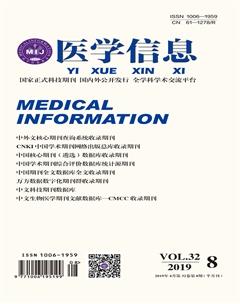肺康復對非小細胞肺癌行肺切除術患者術后免疫功能和生活質量的影響
曲紅 吳鵬 徐超


摘要:目的? 觀察肺康復對非小細胞肺癌(NSCLC)行肺切除術患者術后免疫功能和生活質量的影響。方法? 選取我院2017年4月~2018年8月收治的72例NSCLC并接受肺切除術患者,隨機分為觀察組和對照組,各36例。兩組患者都遵醫囑給予常規藥物治療,觀察組在此基礎上給予肺康復干預。記錄患者術后住院期間的并發癥發生情況和肋間導管置留時間,分別在術前1 d、術后4周記錄患者改良版伯格呼吸困難量表(MBS)評分、免疫功能指標(CD3、CD4、CD8)和生活質量評分。結果? 觀察組并發癥發生情況(27.73% vs 52.74%)和肋間導管置流的時間[(5.48±0.87)d vs (7.34±0.92)d]均少于對照組,差異有統計學意義(P<0.05);術后4周,兩組患者免疫功能、生活質量評分和MBS評分較治療前改善,差異有統計學意義(P<0.05);且治療組免疫功能、生活質量評分和MBS評分改善情況優于對照組,差異有統計學意義(P<0.05)。結論? NSCLC行肺切除術患者術后肺康復干預可以降低術后肺部并發癥的發生率,減短患者術后肋間導管置留時間,改善其免疫功能和生活質量。
關鍵詞:非小細胞肺癌;肺康復;免疫功能;生活質量
中圖分類號:R734.2? ? ? ? ? ? ? ? ? ? ? ? ? ? ? ? ? ? 文獻標識碼:A? ? ? ? ? ? ? ? ? ? ? ? ? ? ? DOI:10.3969/j.issn.1006-1959.2019.08.031
文章編號:1006-1959(2019)08-0109-04
Abstract:Objective? To observe the effect of pulmonary rehabilitation on postoperative immune function and quality of life in patients with non-small cell lung cancer (NSCLC) undergoing pneumonectomy.Methods? 72 patients with NSCLC admitted to our hospital from April 2017 to August 2018 were enrolled in the observation group and the control group, 36 cases each. Both groups of patients were given conventional medication according to the doctor's advice, and the observation group was given pulmonary rehabilitation intervention. The complication of postoperative hospitalization and intercostal catheter retention time were recorded. The modified Berger's dyspnea scale (MBS) score and immune function index (CD3,CD4, CD8) were recorded 1 dbefore surgery and 4 weeks after surgery,and quality of life scores. Results? The complication of the observation group (27.73% vs 52.74%) and the time of intercostal catheter placement [(5.48±0.87)d vs (7.34±0.92)d] were lower than the control group, the difference was statistically significant (P<0.05); 4 weeks after operation, the immune function, quality of life score and MBS score of the two groups were improved compared with those before treatment (P<0.05); and the immune function, quality of life score and MBS score of the treatment group improved. The situation was better than the control group,the difference was statistically significant (P<0.05). Conclusion? Postoperative pulmonary rehabilitation intervention in patients with NSCLC pneumonectomy can reduce the incidence of postoperative pulmonary complications, reduce the postoperative intercostal catheter retention time, and improve their immune function and quality of life.

